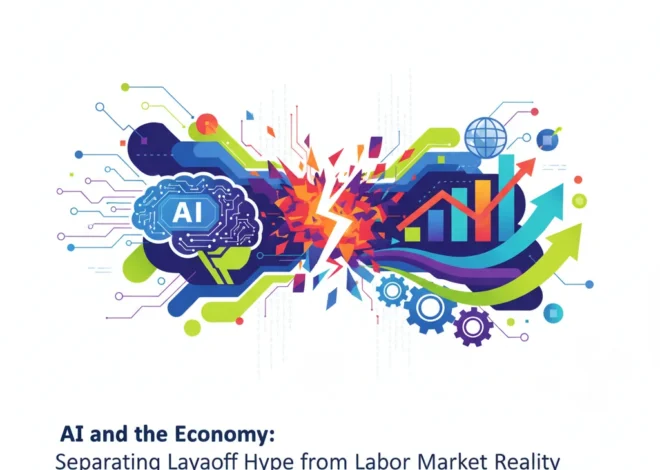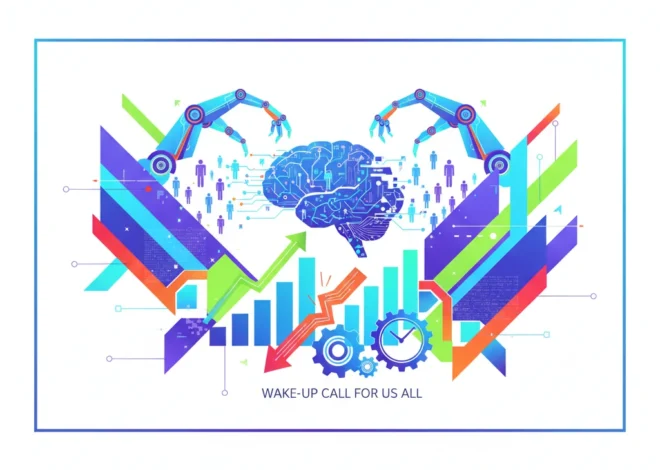
The AI Productivity Paradox: Are You Busier, or Actually Better?
We’re living through a gold rush. The promise of Generative AI and Large Language Models (LLMs) echoes through every boardroom, startup pitch, and developer stand-up. The narrative is intoxicating: work faster, code smarter, write quicker, and unlock unprecedented levels of productivity. Tools like ChatGPT, Copilot, and countless other AI-powered SaaS platforms are being integrated into our workflows at a breakneck pace, all promising to make us superhuman.
But what if the gold is just glitter? What if the feeling of being more productive is just that—a feeling? A recent piece in the Financial Times raises a critical, and slightly uncomfortable, question: when it comes to judging our own performance, especially with new tools, we are notoriously unreliable witnesses. This isn’t just a hunch; it’s a well-documented quirk of human psychology. We’re easily seduced by the sensation of speed and efficiency, often confusing motion with progress.
This is the great AI Productivity Paradox. We feel like we’re accomplishing more than ever, but are we actually delivering more value? Are we solving harder problems, or just solving the same problems faster? This post will dive deep into the psychology behind this paradox, explore how to measure AI’s true impact, and offer a framework for harnessing these powerful tools for genuine innovation, not just the illusion of it.
The Seductive Illusion of AI-Powered Speed
Let’s be honest, the first time you used an LLM to generate a complex piece of code, draft a difficult email, or summarize a dense report in seconds, it felt like magic. That “wow” moment is powerful. It creates a strong positive feedback loop: you ask, the AI delivers instantly, you feel productive. This is the surface-level win, and it’s very real.
- For Developers: Boilerplate code, unit tests, and function stubs materialize in an instant. The friction of starting a new file is gone. This is a clear win for automation in programming.
- For Marketers: Ad copy, blog post outlines, and social media captions are generated in endless variations, conquering the dreaded “blank page syndrome.”
- For Entrepreneurs: Business plans, investor updates, and market research summaries can be drafted in minutes, not hours.
This immediate gratification is what makes us feel more productive. We are completing tasks faster. The volume of our output can increase dramatically. But here’s the catch: our brains are not well-equipped to distinguish between “more output” and “better outcomes.” As the FT article points out, we suffer from a profound “optimism bias,” a tendency to overestimate our positive qualities and our chances of success. When we use a tool that accelerates our work, this bias goes into overdrive. We don’t just think we’re faster; we start to believe we’re fundamentally better.
Amazon's AI Glasses: A Delivery Revolution or a Dystopian Future?
Your Brain’s Buggy Software: Why Self-Assessment Fails
The core of the problem lies not with the artificial intelligence, but with our own natural intelligence—or rather, its inherent flaws. Several cognitive biases cloud our judgment when evaluating our own performance, and they become particularly potent when a powerful new technology is introduced.
One of the most significant is the Dunning-Kruger effect, a cognitive bias where people with low ability at a task overestimate their ability. In the context of AI, a novice might use an LLM to generate code or a legal clause and, because the output looks plausible, they vastly overestimate its quality and their own expertise. They don’t know what they don’t know, and the AI’s confident, articulate output masks potential flaws. According to researchers, this effect means that the least competent are often the most confident in their abilities (source).
This creates a dangerous blind spot. A senior developer might use Copilot to speed up tedious work but will have the experience to spot subtle bugs or architectural issues in the generated code. A junior developer, however, might accept the same code uncritically, introducing technical debt or even critical cybersecurity vulnerabilities that will cost the company far more time to fix later. The initial time saved is an illusion, paid for with interest down the line.
To illustrate this conflict between perception and reality, consider the hidden costs that often accompany the visible gains of using AI.
| Perceived Productivity Gain | Potential Hidden Cost or Reality |
|---|---|
| Faster Code Generation | Increased time spent debugging subtle, AI-introduced errors; potential for unsecure or non-performant code. |
| Instant Content Creation | Homogenized, generic content that lacks a unique voice; risk of factual inaccuracies (“hallucinations”). |
| Quick Problem Solving | Reduced development of deep critical thinking and problem-solving skills; over-reliance on the tool. |
| Automated Research & Summaries | Loss of nuance and context; risk of amplifying biases present in the AI’s training data. |
Moving from AI-Powered Motion to AI-Driven Progress
So, how do we escape this productivity trap? How do we ensure that our investment in AI and machine learning translates into tangible results? It requires a conscious shift in mindset and measurement.
For Developers and Engineering Managers:
The “lines of code” metric has long been discredited, but AI makes it more irrelevant than ever. Instead, focus on what truly matters:
- Code Quality and Maintainability: Use AI to refactor complex code and improve readability, not just to write new code. Measure things like bug rates, code review feedback cycles, and system uptime. A study on the use of AI assistants by consultants found they produced lower-quality work when they relied on the AI too heavily without expert oversight.
- Problem-Solving, Not Just Solution-Generating: Encourage your team to use AI as a brainstorming partner or a “rubber duck” to talk through problems, rather than just a vending machine for code snippets. The real value is in augmenting human intellect, not replacing it.
- Security First: Every line of AI-generated code must be treated as untrusted. Implement rigorous security scanning and manual code reviews, especially for anything touching sensitive data or core infrastructure. This is a critical aspect of modern software development.
The AI Tutor Will See You Now: How AI is Revolutionizing Corporate Training
For Entrepreneurs and Business Leaders:
The allure of efficiency can distract from the ultimate goal of any business: creating value. Don’t just ask, “How can AI make us faster?” Ask, “How can AI help us do things we couldn’t do before?”
- Measure Outcomes, Not Outputs: Instead of tracking the number of marketing emails sent, track customer engagement and conversion rates. Instead of counting features shipped, measure user adoption and satisfaction. These are the metrics that define success for startups and established companies alike.
- Foster a Culture of Critical Thinking: Train your teams to be expert questioners and editors of AI-generated content. The most valuable skill in the age of AI is not the ability to get an answer, but the wisdom to know if it’s the right answer. The fact is, our confidence in our own judgment often exceeds our actual performance by a significant margin (source).
- Invest in Strategic Automation: Use AI to automate the tedious, repetitive tasks that drain your best people of their energy and creativity. Free them up to focus on strategy, customer relationships, and complex problem-solving—the areas where human insight remains irreplaceable.
The Future is Augmented, Not Automated
The debate over whether LLMs will make us more productive is the wrong conversation. It’s like asking if the invention of the word processor made us better writers. For some, it enabled them to write more, faster. For others, it simply enabled them to produce more mediocre prose, faster. The tool is only as good as the artisan who wields it.
The true innovation of this era won’t be found in the algorithms running on the cloud, but in the new workflows we design around them. The most successful professionals will be those who master the art of human-AI collaboration. They will use AI not as a crutch, but as a cognitive exoskeleton—a tool to amplify their strengths, challenge their assumptions, and explore possibilities at a scale and speed previously unimaginable.
Ultimately, escaping the AI Productivity Paradox requires a dose of humility. We must accept that our own perception is flawed and build systems of measurement and verification that hold us and our new AI partners accountable to real-world results. The goal isn’t just to be busy. It’s to be better. And with a mindful, critical approach, AI can absolutely help us get there.
Europe's Titans Assemble: Why Their New Space Alliance is a High-Stakes Bet on Software and AI


